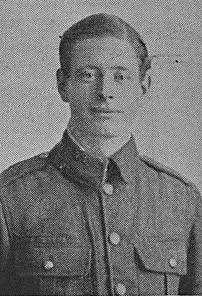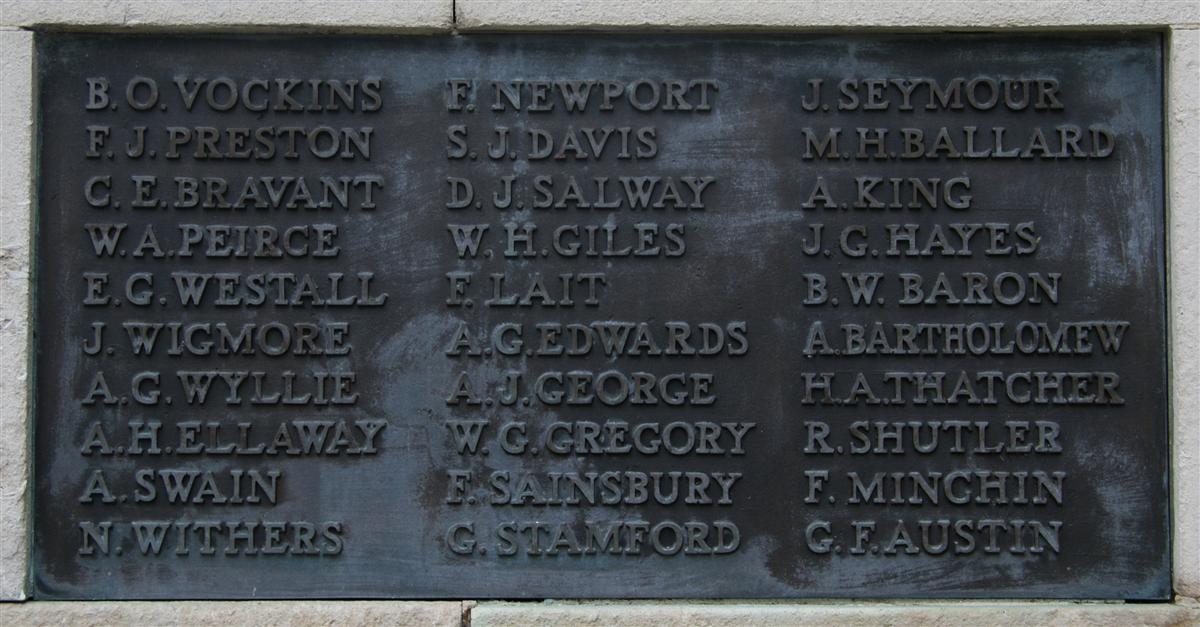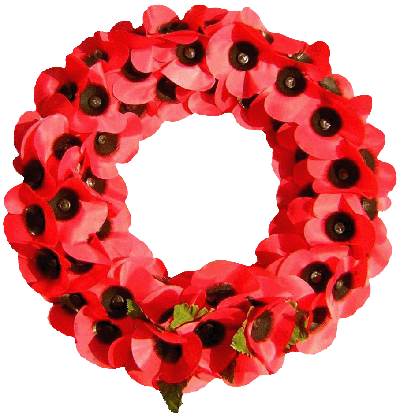Mark Henry Ballard
Sergeant Mark Henry Ballard, 25th Machine Gun Company, Machine Gun Corps.
Mark Henry (known as Harry) was born in 1890, the eldest child of Mark Ballard and his wife Susan (née Cook). Although he was registered as Mark Henry he was known as Henry or Harry throughout his life (even at 5 months old he appears in the 1891 census as Henry).
 Mark Henry (Harry) Ballard |
On 17 August 1908, aged 17, Harry enlisted with the Royal Berkshire Regiment, opting to follow his father who had also signed up for the same regiment in 1882. He was posted to the 1st Battalion, which was stationed in Dover, where they remained until moved to Aldershot in 191x. It may well be that it was during this period that he was selected for their machine gun section, specially trained to operate the battalion’s heavy machine guns (each battalion was issued with two Maxim or Lewis guns).
War was declared on 4 August 1914; the 1st Royal Berks were issued orders to mobilise at 5.50pm that day. Soon reservists were arriving, bringing the battalion up to full strength, on 12 August they crossed to France (having to leave behind 115 reservists who arrived too late to catch the train to Folkestone). The battalion formed part of the 6th Brigade in the 2nd Division of the British Expeditionary Force (BEF) – the ‘Old Contemptibles’. The battalion marched into Belgium on 23 August to confront the advancing Germans. The following day they were retreating, apart from some shelling they played little part in the Battle of Mons, but saw their first real action on 26 August at a bridge over the River Sambre. This had been taken by the enemy but the 1st R Berks were able to drive back the German bridgehead and hold the bridge until ordered to retire the following morning. Action such as this continued as the BEF retreated back to the River Aisne. On 8 September they turned round and began to advance. Soon the two armies were spreading out in attempts to outflank each other – the phase of the war known as the ‘Race to the Sea’. Eventually they reached the sea in the north and the Swiss border in the south and the Western Front settled into the trench warfare that it is famous for.
At some point in these few weeks Harry was wounded by shellfire (both sides habitually used artillery in attempts to knock-out machine gun ‘nests’; he wrote home from hospital:
Newbury Weekly News, 5 November 1914, p8 – Local War Notes
Mrs Ballard, of Pelican-terrace, Speenhamland, has received a letter from her son, Harry, dated from the Memorial Hospital at Much Wenlock, Shropshire, in which he says:-
“I am glad to say I am doing as well as can be expected. Of course I have a bit of a job to get about on my right leg, as I have just had the piece of shell taken out, so I am in bed nearly all the time, and I have got splints on as well. I have not been so well treated in my life before. We have sisters to look after us, and get the best of everything to eat. It is a wonder that I am here alive to be able to write this letter to you, because when I got hit the shell burst right over me, and I could not run out of it, because I had to lay down, as they were still shelling us. So I waited till it got dark. Then I was carried away. I have been in a hospital in Liverpool; now they have put us here, but it is a lovely place and comes so nice after all our hardships out there. This is not the first time, for I had a near go for my life once before, a shell burst right in front of me, not three feet away, but it did not hurt me, but killed three chaps on my right side. When we get better here, they send us to a seaside place for a time, and then send us home for about two weeks.”
This was not the end of Harry’s war, he recovered from his wounds and returned to France in May 1915; it was probably at this point that he was posted to the 2nd Battalion Royal Berks, in the 25th Brigade, 8th Division. The tactics of the use of heavy machine guns led to changes in his involvement; first battalion machine gun sections were amalgamated in brigade machine gun companies, then these companies were amalgamated into a new command – the Machine Gun Corps (MGC). The second reorganisation was organisational, the MGC still supplied a company to each brigade (in reality the company that had always been with the brigade). Thus Harry found himself in the 25th Company MGC which comprised the machine gun sections from the 2nd Royal Berks, the 2nd Lincolnshire Regiment, the 2nd Royal Irish Rifles and the 2nd Rifle Brigade.
For almost two years he survived the mix of boredom and terror that was the lot of infantrymen on the Western Front, taking part in the Battle of Loos and the Battle of the Somme. He rose to the rank of sergeant, in charge of a machine gun crew of six in action, and senior NCO in a ‘section’ responsible to a 2nd Lieutenant for the smooth operation of a quarter of the Brigade’s eight heavy machine guns. The Germans were retreating in an ordered withdrawal to a new, shorter and heavily fortified line of defences known as the Hindenburg Line – the Allies were following them, taking over shattered territory and facing carefully prepared rearguard positions. The Company distributed its resources as required to support offensive actions, on 30 March 1917 this involved attaching two sections to the 2nd Rifle Brigade, for an attack on Dessart Wood, and two more sections to the 2nd Royal Irish Rifles for an attack on a ridge running south-east from Dessart Wood, which would cover the main attack by the 2nd Rifle Brigade. Dessart Wood was captured with relatively light casualties and new forward positions were established. Two of the MGC sections were withdrawn that evening, including Harry Ballard’s section. While they were retiring from the front line an enemy shell exploded, killing Harry – the only casualty experienced by his company that day.
His death was announced in the local paper:
Newbury Weekly News 3 May 1917 – Killed in Action
BALLARD – March 30, in France, Sergt Mark Henry Ballard, aged 26, Machine Gun Corps, dearly loved and only son of Mr and Mrs M Ballard, Speenhamland, Newbury.
Two weeks later more details were forthcoming:
Newbury Weekly News 17 May 1917 – Local War Notes
Information regarding the death of Sergt Harry Ballard, only son of Pte and Mrs M Ballard, of Speenhamland, Newbury, has been received from his chum, Lce-Corpl Wilkins, who has been home on ten days leave from the trenches. Deceased was a time service man when war broke out. He was in the Royal Berks, and went to France in August, 1914. Being wounded in October, 1914, he returned to France in May, 1915, when he was transferred to the Machine Gun Corps. Since then he has taken part in all the important engagements. Sergt Ballard was killed on the 30th of March, by a shell exploding near him whilst taking his men back to rest. Death was instantaneous. His chum helped to bury him next morning. Deceased’s father is in the Royal Defence Corps, now stationed at Fareham, and a brother-in-law is in the Royal Flying Corps. Mrs Ballard has received a letter from the Company-Sergt-Major, in which he says:- The Warrant Officer, Staff Sergeants and Sergeants of the Company, respectfully beg to tender their deep sympathy to you in your sad bereavement of the loss of your son. We feel his loss very deeply, for he was a true friend, a good comrade, and a gallant soldier, always cheery, with a smile for everybody. He died doing his duty, bravely and nobly. You can rest assured that everything possible was done for him.
Harry’s body lies in Gouzeaucourt New British Cemetery, almost certainly this was not his original resting place as his grave (V.A.8) is not in the part of the cemetery holding the interments that took place during the war. After the war bodies were transferred into this cemetery from smaller cemeteries that were being closed, Harry’s was probably one of these.

Harry (M H) Ballard's name on Newbury War Memorial (upper right) |
His cousins, Albert, George and Ernest Ballard also died, Albert and Ernest in France and George at Gallipoli. For unknown reasons only Harry (Panel 4) and George (Panel 1) are commemorated on the Newbury Town War Memorial and the Speenhamland Shrine. Ernest was commemorated along with Harry and George on the memorial that was erected in Speenhamland School (now lost). However, George’s brother, Albert, has never been commemorated locally, quite possibly owing to family embarrassment; they had given him up to the Waifs & Strays Society who sent him to Canada where he enlisted in the Canadian Expeditionary Force.

